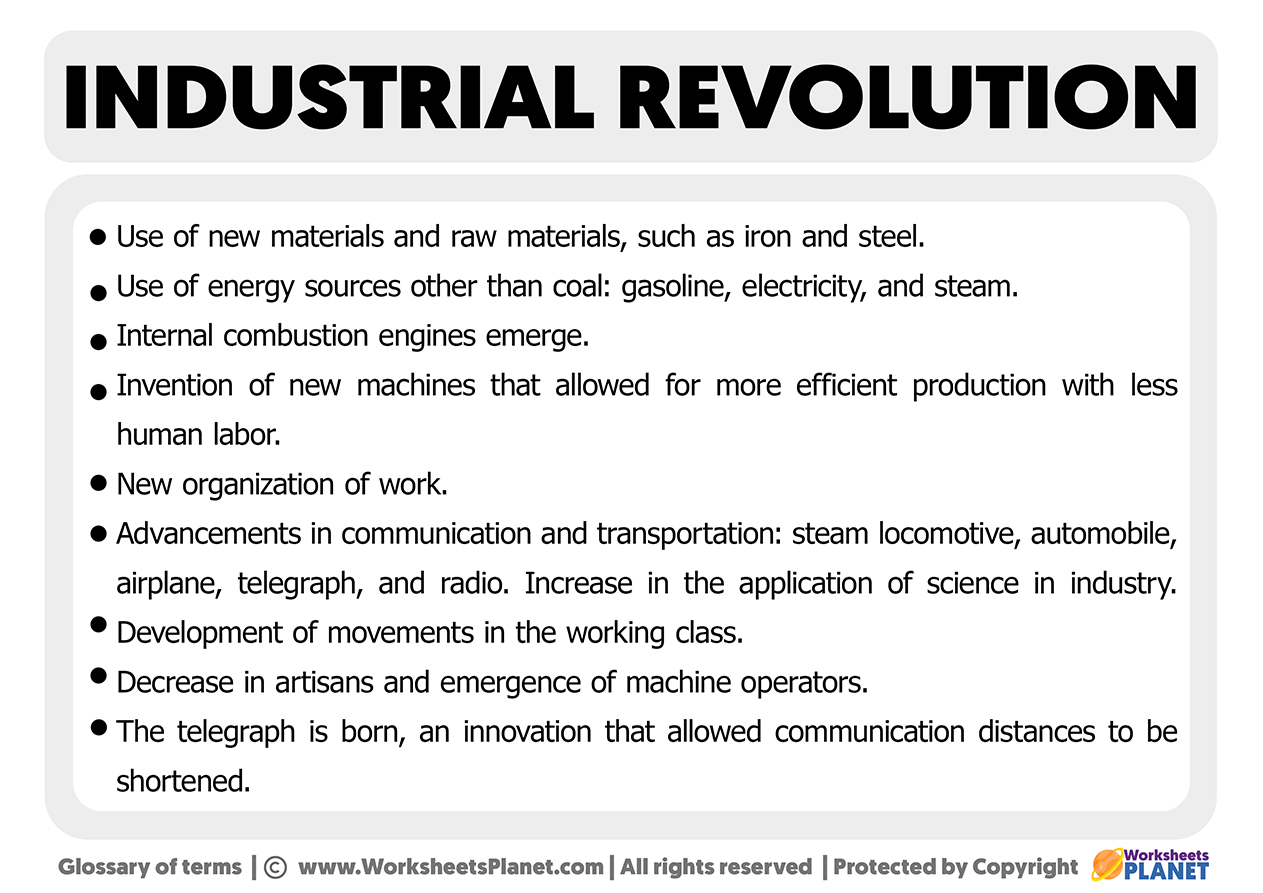
- Use of new materials and raw materials, such as iron and steel.
- Use of energy sources other than coal: gasoline, electricity, and steam. Internal combustion engines emerge.
- Invention of new machines that allowed for more efficient production with less human labor.
- New organization of work.
- Advancements in communication and transportation: steam locomotive, automobile, airplane, telegraph, and radio.
- Increase in the application of science in industry.
- Development of movements in the working class.
- Decrease in artisans and emergence of machine operators.
- The telegraph is born, an innovation that allowed communication distances to be shortened.

